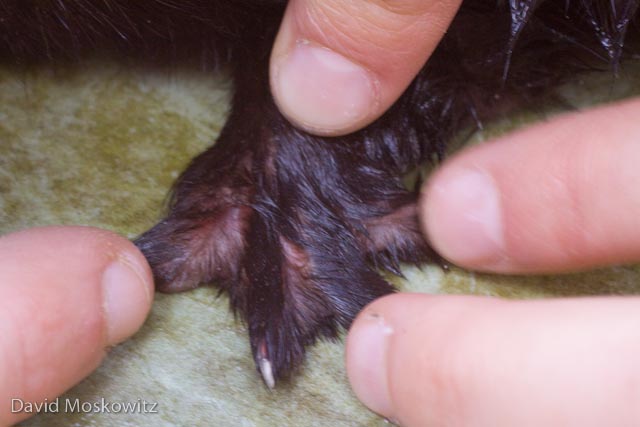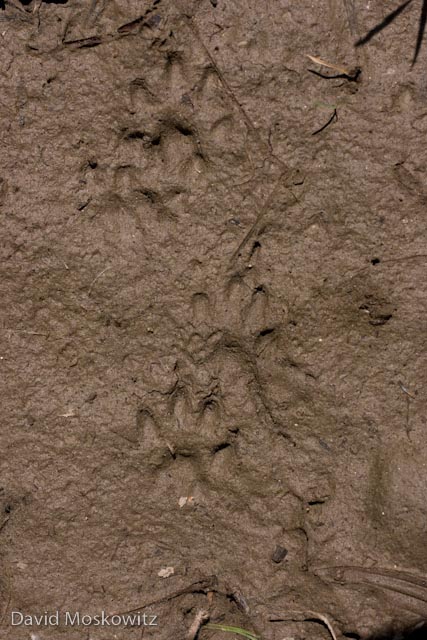Left front foot.
While researching and writing my field guide I encountered various published accounts of the foot structure of mink (Neovison vison). Because of these discrepancies I sought out specimens to examine personally. I examined the feet of 3 recently deceased mink, all from western Washington as well as about a dozen museum skins at the Burke Museum at the University of Washington. All of the green specimins I examined showed mesial webbing on both front and hind feet. Some of the museum skins did as well, while others where dried in such a way so as to make analysis of this impossible. None of the green specimins or museum skins were clearly lacking webbing between toes. The amount of webbing is slightly less than in their larger cousins, river otters (Lutra canadensis) but is none the less quite clear. As is typical with the tracks of most web-footed animals, webbing can be detected in footprints in deep substrates but is often not apparent where substrate is firmer.The photos of actual feet bellow are from a male mink which was killed by a vehicle in the Snoqualmie River Valley, King County, Washington in 2009.
Left front foot with toes splayed showing mesial webbing between toes.
Hind feet.
Toes splayed on hind foot revealing webbing.
Top view of a hind foot also showing webbing.
All four tracks of a mink in a typical loping pattern for the species. In this deep substrate the webbing between the toes has registered. Tracks from along the Snohomish River, Snohomish County, Washington.
Closer view of two tracks (left hind on top of left front) from the same set of tracks as above.
Tracks a small (likely female) mink from along the Yakima River in Kittatas County, Washington, also in a typical loping pattern. In this firmer substrate the mesial webbing has not registered.









